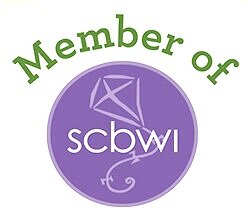Excerpt from “The Conjurers: Fight for the Fallen”
See that beast roaring out of the jungle? It’s one of my favorite creatures. Now I can’t tell you everything about it without revealing a major spoiler from “The Conjurers” book three. Trust me, there’s a lot more to that tree monster than meets the eye.
What I will do is give you a quick breakdown of how this monster, “Awen”, made its way into the pages of book three. And it starts with a tip I’ve shared before.
1. Always carry a sketchbook
Yep. I keep saying it because I mean it. Let me tell you why. While I was re-writing book two, I kept doodling in my notebook. At the time, I had no idea what the story was for the third book. So I scribbled down all ideas that popped into my head whenever and wherever they popped. Sometimes while we were out to dinner and others while I waited to pick my son up from school.
One day, this terrifying, lumbering wooden monstrosity appeared in my sketchbook. I sketched on, piecing together ideas about book three taking place in Las Vegas and listing all the magicians I wanted to work into the story. So while I pondered how to get Mr. Electric, Siegfried and Roy and Melinda into the plot, I forgot all about the nightmare I had sketched weeks earlier. Which brings me to my second tip:
2. Sketch and Forget
The most important part of filling up notebook after notebook is exactly that: keep filling them. It keeps your imagination going as long as you don’t stop too long to think about what all these drawings mean. That’s where the forgetting part comes in. When I first drew Awen, I could have spent hours or days trying to figure out how it fit in to book three. That turns into frustration, which dries up the idea stream. Gotta keep the pen moving.
Keep drawing and forgetting. Assume you’ll never use 99% of the stuff that pours out of your head. There’s gold in there somewhere, but you’ll never find that pea sized nugget if the river runs dry. Finding those nuggets comes later.
The key is to draw a lot and often, which is easier when you have your trusty notebook in your pocket. This is the fun part, so when you think too much about what all this randomness means, take a break.
3. Revisit your Sketches
Time to find your gold! When new ideas slow down, take some time to sit back and flip through your notebooks. Especially the older ones. There’s a lot more in those that you’ve forgotten, and that’s important. When you see them again for the first time, a wave of new ideas will flood in. Get those down on paper and see what happens.
In my case, I was outlining book three. In the opening scene, Alex is scouring his parents’ journal he found in book two. He discovered they had sailed to an island, and going back to my previous post about obstacles, I knew I would have to fill that island with obstacles. What about a monster? Bingo! I flipped through my notebooks until I found Awen. That was my monster! I had forgotten all about the tree beast and now, with fresh eyes, a tornado of ideas littered my current notebook with background info on Awen and how it connected to Alex and Emma’s parents. Sorry, can’t reveal what that connection is.
If I my pile of notebooks full of random ideas hadn’t existed, there’s no way I would have come up with Awen. And that time between the first doodle and the outline for book three gave rise to a complex character that is central to book three. How central? I can’t wait for you to find out!


